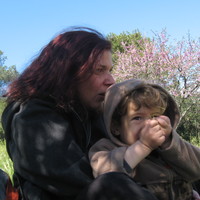
Irina Sekerina
1984--B.A. in Theoretical and Applied Linguistics, Moscow State University
1997--Ph.D. in Linguistics, The Graduate Center (CUNY)
1997-1999--Postdoctoral Fellow, Center for Research in Cognitive Science (IRCS), University of Pennsylvania
1999-2001--Postdoctoral Associate, Rutgers University Center for Cognitive Science (RuCCS)
2002--present Professor, Department of Psychology, College of Staten Island and Ph.D. Program in Linguistics, Ph.D. Program in Psychology (Language, Cognition, and Development), The Graduate Center (CUNY)
1997--Ph.D. in Linguistics, The Graduate Center (CUNY)
1997-1999--Postdoctoral Fellow, Center for Research in Cognitive Science (IRCS), University of Pennsylvania
1999-2001--Postdoctoral Associate, Rutgers University Center for Cognitive Science (RuCCS)
2002--present Professor, Department of Psychology, College of Staten Island and Ph.D. Program in Linguistics, Ph.D. Program in Psychology (Language, Cognition, and Development), The Graduate Center (CUNY)
less
Related Authors
Tanya Ivanova-Sullivan
University of California, Los Angeles
Daniel A Kaufman
Queens College of the City University of New York
Silvia Luraghi
University of Pavia
Ethelbert Kari
University of Port Harcourt
Roumyana Pancheva
University of Southern California
Anton Zimmerling
The Pushkin State Russian Language Institute
Adam Werle
University of Victoria
Elena Anagnostopoulou
University of Crete
Matthew Baerman
University of Surrey
InterestsView All (6)








Uploads
Books by Irina Sekerina
Articles by Irina Sekerina
https://bef2015.commons.gc.cuny.edu/
https://bef2015.commons.gc.cuny.edu/
Eleven papers from that workshop were published in 2016 in a special issue of Linguistic Approaches to Bilingualism 6(5) are reprinted here (Bak; Bialystok; Clahsen & Veríssimo; Friedman; Gathercole et al.; Hofweber, Marinis, & Treffers-Daller (1); Klein; Marton; Sorace; Valian; Watson, Manly, & Zahodne). Nine posters from the workshop were written up and are published here for the first time (Beatty-Martinez & Dussias; Hofweber, Marinis, & Treffers-Daller (2); Kim, Marton, & Obler; Marton & Yerimbetova; Nadig & Gonzalez-Barrero; Poarch & van Hell; Whitford & Luk; Wolleb, Sorace, & Westergaard; Zirstein, Bice, & Kroll).
These 20 chapters are grouped in four parts: Part I Beyond Simple Relations, Part II Language Processing, Part III Cognition and Bilingualism, and Part IV Development, Aging, and Impairment.
geometric shapes. The spoken sentences contained the ambiguity of interest and were paired with visual displays that contained two scenes. In the disambiguating conditions, only one of the scenes was compatible with the attachment of the RC as high or low. In the ambiguous condition, either scene could be chosen. Sentences were presented to participants with one of two prosodic contours: compatible with high attachment (phrasal break before the RC) or compatible with low attachment (phrasal break after the head noun in the complex NP). Participants’ interpretation preferences were assessed via their choice of the scene which disambiguated the
interpretation of the RC; we additionally recorded participants’ eye movements as they performed the task. We discuss the interplay of prosodic and visual disambiguation in determining the attachment preferences of semantically shallow RCs.
Keywords Relative clause attachment ambiguity · Visual disambiguation ·
Prosodic disambiguation · Eye tracking · English
reanalysis. We used a self-paced listening task and an aural acceptability rating task with 13 English-dominant, highly proficient heritage speakers and 22 monolingual speakers of Bulgarian.
Heritage speakers of Bulgarian process and rate the grammatical proclitic and ungrammatical enclitic positions as equally acceptable, and we contend that this pattern is due to language-internal
reanalysis. We suggest that the trigger for such reanalysis is the overgeneralization of the prosodic Strong Start Constraint from the left edge of the clause to any position in the sentence.